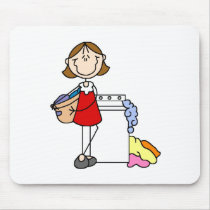
Today we will be learning about my favourite concept of all, called the External Transfer with Changed Quantities Concept. It can be quite difficult if u do not understand completely about them, so pay attention. External Transfer with Changed Quantities Concept involves changes to both quantities. The quantities at the beginning and the end are different, thus making it very difficult to solve such word problems using the traditional model approach.
Question1 :
The number of ten-cent coins in a box was 1/2 the number of fifty-cent coins. Syed took out 5 fifty-cent coins and exchanged them for ten-cent coins. Then he put the money back into the box. The number of fifty-cent coins became 5/8 the number of ten-cent coins. How much money was there in the box?
Solution 1:
Ten-cent Coins Fifty-cent Coins
1unit 2 units Initial
+25 - 5 Change
8 parts 5 parts Final
x5 x8
Ten-cent Coins Fifty-cent Coins
5unit 16 units Initial
+125 -40 Change
40 parts 40 parts Final
The final quantities are equal (40parts).
Hence:
Ten-cent coins : 5units + 125 + 40
Equal
Fifty-cent coins : 16 units
11units: 125 +40 = 165
1unit: 165 divide 11 =15
2units : 2x15= 30
Total amount of money= (15x10) + (30x 50)
= 1650 (cents)
= $16.50#
Question 2:
Joyce had 1/5 as many erasers as Ethan at first. Then their monther gave Ethan 12 more erasers and Joyce 5 more erasers. The ratio of the number of Ethan's erasers to the number of Joyce's erasers became 4:1. How many erasers did Ethan have at first?
Solutions2 :
Joyce Ethan
1unit 5 units Initial
+5 +12 Change
1 parts 4 parts Final
x4
Joyce Ethan
4unit 5 units Initial
+20 +12 Change
4 parts 4 parts Final
Their final quantities are equal (4parts).
Joyce: 4units + 20
Equal
Ethan: 5units + 12
1unit: 20-12 =8
Number of erasers Ethan had at first= 5units
= 40#
Question of the day:
Ray had 40% as many pencils as Rajon at first. Ray gave 8 pencils away and Rajon gave 40 pencils away. Then Ray had 0.5 as many pencils as Rajon. How many pencils did Ray have at first?
Answer: 48#
Note: This lesson is very important.
End of Lesson 4
Reference from the book "Challenging Maths Problems Made Easy" by Ammiel Wan Chee Hong















